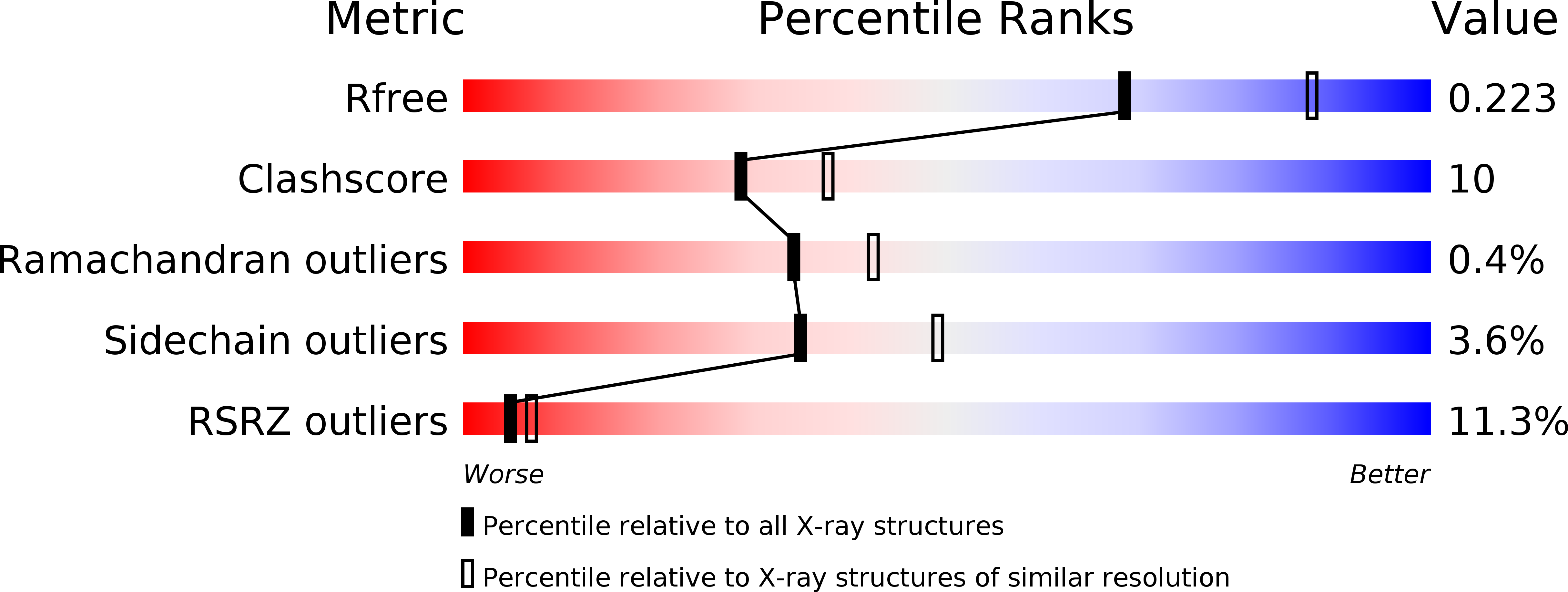A novel evolutionarily conserved domain of cell-adhesion GPCRs mediates autoproteolysis.
Arac, D., Boucard, A.A., Bolliger, M.F., Nguyen, J., Soltis, S.M., Sudhof, T.C., Brunger, A.T.(2012) EMBO J 31: 1364-1378
- PubMed: 22333914
- DOI: https://doi.org/10.1038/emboj.2012.26
- Primary Citation of Related Structures:
4DLO, 4DLQ - PubMed Abstract:
The G protein-coupled receptor (GPCR) Proteolysis Site (GPS) of cell-adhesion GPCRs and polycystic kidney disease (PKD) proteins constitutes a highly conserved autoproteolysis sequence, but its catalytic mechanism remains unknown. Here, we show that unexpectedly the ∼40-residue GPS motif represents an integral part of a much larger ∼320-residue domain that we termed GPCR-Autoproteolysis INducing (GAIN) domain. Crystal structures of GAIN domains from two distantly related cell-adhesion GPCRs revealed a conserved novel fold in which the GPS motif forms five β-strands that are tightly integrated into the overall GAIN domain. The GAIN domain is evolutionarily conserved from tetrahymena to mammals, is the only extracellular domain shared by all human cell-adhesion GPCRs and PKD proteins, and is the locus of multiple human disease mutations. Functionally, the GAIN domain is both necessary and sufficient for autoproteolysis, suggesting an autoproteolytic mechanism whereby the overall GAIN domain fine-tunes the chemical environment in the GPS to catalyse peptide bond hydrolysis. Thus, the GAIN domain embodies a unique, evolutionarily ancient and widespread autoproteolytic fold whose function is likely relevant for GPCR signalling and for multiple human diseases.
Organizational Affiliation:
Howard Hughes Medical Institute, Stanford, CA, USA. demeta@stanford.edu


















